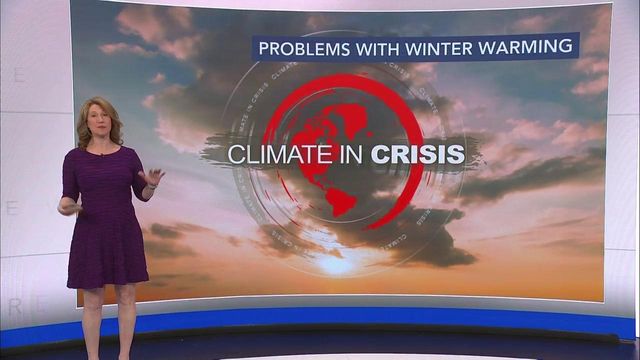Early spring on the way, for better or worse
As joggers weaved between a sea of sleeveless shirts, sandaled feet were stretching out from beneath tables on al fresco dining patios to greet the sunlight illuminating the streets of downtown Raleigh. It's not a scene you'd expect to see in early February, but Thursday's high of 75 degrees was record-breaking, surpassing the previous record of 74 set nearly 30 years ago.
Fresh out of Raleigh's third-warmest January on record, a new report indicates the spring will be showing up earlier this year.
The National Phenology Network, a group that studies and forecasts seasonal environmental changes, says that spring leaves are showing as much as three weeks early across parts of the southern U.S. and nearly 11 days early in Charlotte, North Carolina. The early leaf index in some areas, including north Texas and southern Arkansas, is a phenomenon that hasn't been seen in 40 years.
"It sounds wonderful that we’re all going to enjoy some 70-degree temperatures in the winter," WRAL meteorologist Elizabeth Gardner said. "But the flip side of that is that ski resorts in North Carolina and cold weather economies are struggling, and there will be a potentially longer pollen season and mosquito season as it warms up faster."
Climate change can impact predators and parasites that keep insect populations in check, leading to more favorable conditions for outbreaks or mass migration of pests, according to Matt Bertone, the director of the Plant Disease and Insect Clinic at NC State.
"We have a number of native species creeping up further into North Carolina because the milder winters are more conducive to their survival," Bertone said.
While the warm weather may be tempting to get a jumpstart in the garden, experts warn it may be risky as temperature fluctuations are still expected.
"Though the stores are putting out their plants, I would advise to wait," said Greg Paige, director of horticulture at the JC Raulston Arboretum. "It's really important to be patient as a gardener."
He suggests waiting until April to plant tomatoes, which are more dependent on the heat to thrive. Many plants are resilient and do not require coverage if another cold spell hits, according to Paige. He also advises against pruning too soon.
"If you prune things off now, you can encourage new growth," Paige said. "Then if it gets cold again that will only cause more damage."
Paige says the USDA plant hardiness zone map can be a good resource to determine which plants are most likely to thrive in a certain location, but climate change is moving those zones further north.
"Our hardiness zone has changed in the last 10 years which is really kind of scary when you think about it," Paige said.












